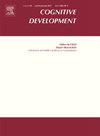青少年早期经历对行为发展的系统影响:来自“人-鼠互动范式”的见解
IF 1.8
3区 心理学
Q3 PSYCHOLOGY, DEVELOPMENTAL
引用次数: 0
摘要
本研究以人类实验者为代监护人,以1月龄雄性sd大鼠为代幼鼠,引入“人鼠互动范式”(HRIP),探讨青少年早期经历对行为发展的系统性影响。在为期三周的干预中,大鼠被分配到积极的青春期早期经历(PEE),消极的青春期早期经历(NEE)或对照组。到第二周,行为稳定下来。一系列的评估表明,PEE大鼠表现出较低的焦虑,并迅速适应新环境。相比之下,NEE大鼠表现出早期的程序性学习,但长期记忆保留不足。PEE大鼠对玩具大鼠更感兴趣,而NEE大鼠表现出厌恶;两组都喜欢不熟悉的老鼠。在有同理心的情况下,两组人都不愿与被困的同伴分享食物;特别是NEE大鼠,表现出更高的警惕性和进食中断。社会竞争测试显示出明显的优势和劣势,PEE群体保持着更稳定的社会等级。对照大鼠虽然对社会环境变化的反应较弱,但在基于地位(非食物奖励)的竞争环境中始终表现良好。这些发现强调了青少年早期经历在塑造情感、认知和社会行为方面的重要作用,强调了HRIP作为一种发展研究模型的转化价值。本文章由计算机程序翻译,如有差异,请以英文原文为准。
Systematic impacts of early-adolescent experiences on behavioral development: Insights from the “Human‐Rat Interaction Paradigm”
Utilizing human experimenters as surrogate caretakers and one-month-old male Sprague-Dawley rats as child proxies, this study introduces the “Human-Rat Interaction Paradigm” (HRIP) to explore the systematic impact of early-adolescent experiences on behavioral development. Over a three-week intervention, rats were assigned to positive early-adolescent experiences (PEE), negative early-adolescent experiences (NEE), or a control group. By the second week, behavior stabilized. A series of assessments reveal that PEE rats showed lower anxiety and adapted quickly to new environments. In contrast, NEE rats exhibited early procedural learning but inadequate long-term memory retention. PEE rats were more interested in toy rats, while NEE rats displayed aversion; both groups preferred unfamiliar rats. In empathetic scenarios, both groups hesitated to share food with a trapped peer; NEE rats, in particular, showed increased vigilance and feeding interruptions. Social competition tests revealed distinct strengths and weaknesses, with the PEE group maintaining a more stable social hierarchy. Control rats, though less responsive to socio-environmental variations, consistently performed well in status-based (non-food reward) competitive settings. These findings highlight the significant role of early-adolescent experiences in shaping emotional, cognitive, and social behaviors, underscoring the translational value of HRIP as a developmental research model.
求助全文
通过发布文献求助,成功后即可免费获取论文全文。
去求助
来源期刊

Cognitive Development
Multiple-
CiteScore
3.20
自引率
5.60%
发文量
114
期刊介绍:
Cognitive Development contains the very best empirical and theoretical work on the development of perception, memory, language, concepts, thinking, problem solving, metacognition, and social cognition. Criteria for acceptance of articles will be: significance of the work to issues of current interest, substance of the argument, and clarity of expression. For purposes of publication in Cognitive Development, moral and social development will be considered part of cognitive development when they are related to the development of knowledge or thought processes.
 求助内容:
求助内容: 应助结果提醒方式:
应助结果提醒方式:


